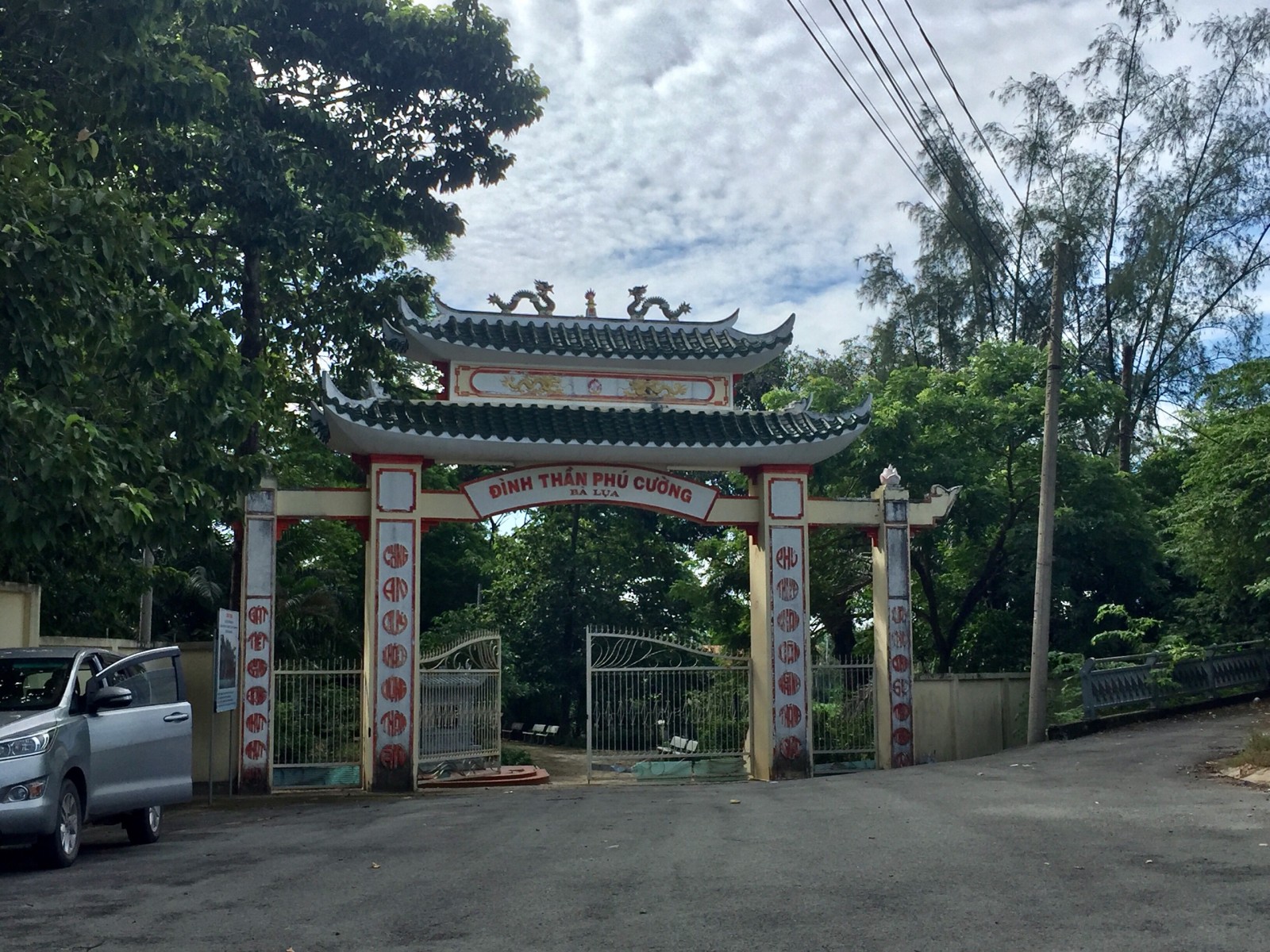The ancient vestige of an ancient communal house
In the system of ancient communal houses on Binh Duong land, Phu Cuong communal house (often called Ba Lua communal house) is the most ancient one. The communal house has been recognized as a historical-cultural site at the provincial level.

Phu Cuong communal gate
Ancient temple
Phu Cuong communal house is located in Quarter 6, Phu Tho Ward, Thu Dau Mot City. The communal house was built on a small hill with the main view facing Ba Lua canal. Perhaps that is why the communal house is known around the area as Mrs. Lua communal house. Dang Nhon Sanh, deputy head of the ritual ceremony of Phu Cuong communal house, said that the communal house has been known to her in the familiar area as Mrs. Lua communal house. Later, the new communal house was called Phu Cuong communal house. According to Mr. Sanh, the reason why the communal house was named Phu Cuong communal house was due to a person who specialized in studying Han Nom culture when coming here to study and read the two words Phu Cuong written in Nom script on. So, since then, the communal house was named Phu Cuong communal house in addition to the familiar name of Ba Lua communal house.
According to Mr. Sanh, although in Phu Tho ward, the communal house was called Phu Cuong communal house because when it was newly built, it was a place of worship of the deity of the old Phu Cuong village. “I have also heard that Phu Cuong's temple was originally located at the City Party Committee and People's Committee of Thu Dau Mot City today. After that, the French came to conquer Thu Dau Mot and took this position to build a working office. The old communal house was destroyed, so that the place to worship the royal deity could be found, the villagers have contributed their efforts to rebuild the communal house in the present position,” Mr. Sanh said.
Phu Cuong's communal house was ordained by Tu Duc King, but he did not know why his ordination was lost. In 2008, representatives of the Rite of Ceremony of Phu Cuong temple went to Hue Monuments Conservation Center and asked to restore the spirit of Phu Cuong communal house in the past. According to Mr. Sanh, the current deity in the communal house is Mr. Nguyen Van Thanh, a general under Gia Long period.
The exact construction of the communal house up to now is still unknown, but based on the documents and evidence left behind, researchers believe that the communal house was built before 1861. With a unique construction architecture Originality, the communal house was once considered one of the most beautiful communal houses in the Southern region. According to the records of the Provincial Museum, Ba Lua communal house is famous for its unique construction architecture, monumental scale, and intricate carvings in the communal house. So, in 1921, the French authorities set up a model and took it to an exhibition in Marseille (France).
In a research paper on Ba Lua communal house, Mr. Nguyen Hieu Hoc, a folklore researcher in Binh Duong, wrote: “In 1930, Mr. Geogrette Naudin, researcher of Cochinchine Museum came to learn and introduced in the Cochinchine series, as follows: “At that time, Mrs. Lua's family was considered to be the most beautiful architectural house, secondly in Cochinchina, with beautiful and precious wooden pillars, pieces of pink lacquered pattern. , beautiful and rare ancient weapons ... attract many tourists to visit ". Unfortunately, the most unique and beautiful house in the South of Vietnam was destroyed by the war. The once glorious images of the communal house are only left in the photos or recorded in the history books ”.
To save the old culture
Experiencing many ups and downs of time, the communal house was damaged, lost many things and was rebuilt and repaired many times. The present communal house was restored and re-established in 1957. The communal house was built in the old traditional style, consisting of three terraced houses in the style of Tam; Trusses, columns, piercing, troughs are cast by cement. The innermost space of the main hall is the place to worship the chief deity, the tutelary god. The two sides are mosaic worship left states and states. Opposite to the altar is the incense court. In the main hall there are also horizontal panels, sentences to create solemnity for the place of worship. The nave is the sacrificial space, the place to make offerings to the gods, the place to read sacrifices during the ceremony. The outermost room called the Council of Foreigners has the money for worship. Two sides of the main hall also has a corridor (meeting place) and a warehouse. In front of the communal house, there is a room of dragon and tiger. The two sides worship left guard, right guardian. In the communal house, there are still some ancient and beautiful wooden and precious weapons.
Although not maintaining the architectural prototype of the old temple, Phu Cuong temple still retains the cultural values of the old village, a place for locals to return to traditional culture. Every year, the communal house has 2 occasions, namely Ky yen ceremony held on January 11th and the Falling Ceremony to report the harvest results held on the 1st of the 10th lunar month. On these occasions, apart from the locals, it also attracts a large number of people in the surrounding areas to attend the family festival.
With the values associated with this ancient communal house, on June 2, 2004, the provincial People's Committee issued a decision to rank Phu Cuong communal house as a historical-cultural relic at the provincial level.
Reported by Cam Ly – Translated by Vi Bao

